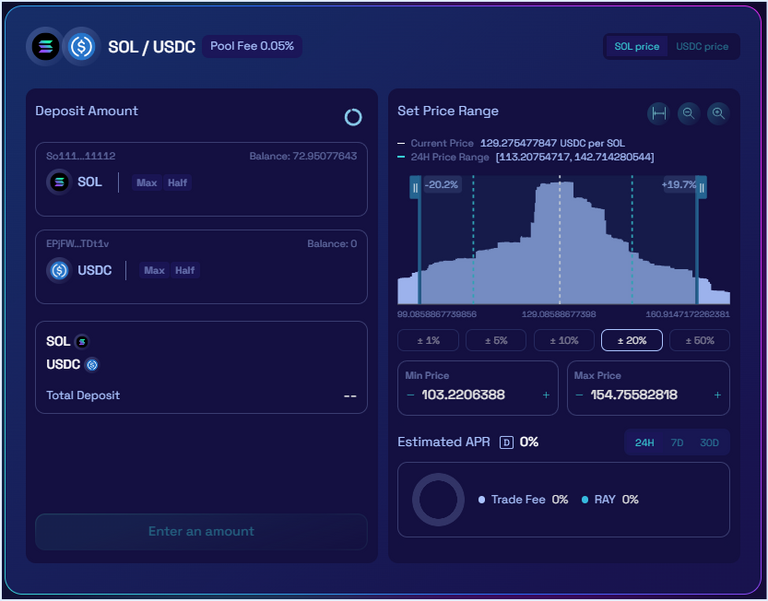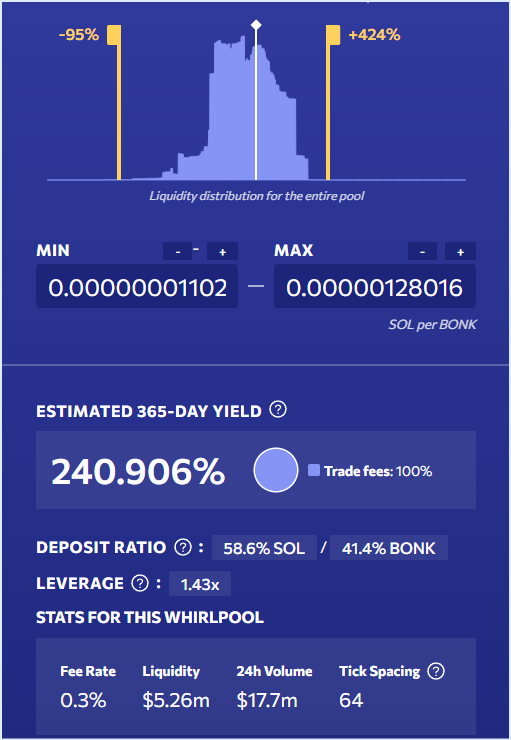In decentralized finance (DeFi) on platforms such as those built on the Solana or Ethereum blockchains, the concept of "tick spacing" plays a significant role in the functionality and strategy behind liquidity pools and Automated Market Makers (AMM).
 Raydium CLMM Pool
Raydium CLMM Pool

ORCA Concentrated Liquidity Pool
Tick spacing determines the intervals between price points (ticks) within a liquidity pool. When a pool has tick spacing of 8, for example, it means that each price level or "tick" is 0.08% apart from the next. Consequently, a tick spacing of 128 would indicate that each tick is 1.28% apart from its neighbors.
Implications of Tick Spacing
The design of tick spacing has several implications for liquidity providers and traders.
Granularity of Prices: Smaller tick spacing allows for more precise price levels. This is particularly important in stable pools, where assets are expected to trade close to parity, and even slight variations can be significant.
Liquidity Depth: With smaller tick spacing, liquidity can be more concentrated around certain price levels, allowing for greater capital efficiency. This means that liquidity providers might be able to provide less capital and still offer strong support or resistance at those prices.
Impact on Slippage: The granularity of tick spacing can influence the slippage that traders experience. Smaller tick spacing typically results in less slippage, as orders can be executed closer to the market price due to the higher density of price levels.
Potential for Profit: For liquidity providers, tighter tick spacing in highly stable markets might offer more profit potential.
By concentrating liquidity within narrower price bands where the trading activity is high, they can earn more fees relative to their capital investment. But it is also very risky in case of high volatility that the price move out of the price bands.
Tick Spacing and Profit Maximization
To maximize profits, liquidity providers should consider the following factors.
Market Volatility: In more volatile markets, wider tick spacing might be beneficial as it accommodates larger price movements without needing frequent realignment of liquidity.
Fee Earnings: Smaller tick spacing can result in increased transaction fees in stable markets, as trades occur more frequently within the tight price ranges.
Impermanent Loss: In a volatile market, closer tick spacing can expose liquidity providers to greater impermanent loss if the price moves significantly beyond their specified range. Wider tick spacing can mitigate this risk.
Liquidity Utilization: The ultimate goal is to have one's liquidity utilized as much as possible. Thus, setting tick spacing where there is the highest volume of trading can be advantageous.
Tick spacing is a nuanced tool that requires balancing potential earnings against market behavior and risk.
For those looking to maximize profits, the best approach will depend on the asset pair's volatility, typical trading patterns, and the liquidity provider’s risk tolerance.
As with all trading and investment, there is no one-size-fits-all strategy, and adjusting one's approach in response to changing market conditions is key.
When considering tick spacing adjustments on Solana DEX or any other platform, always refer to real-time data and consider current market trends to inform your decision-making process.